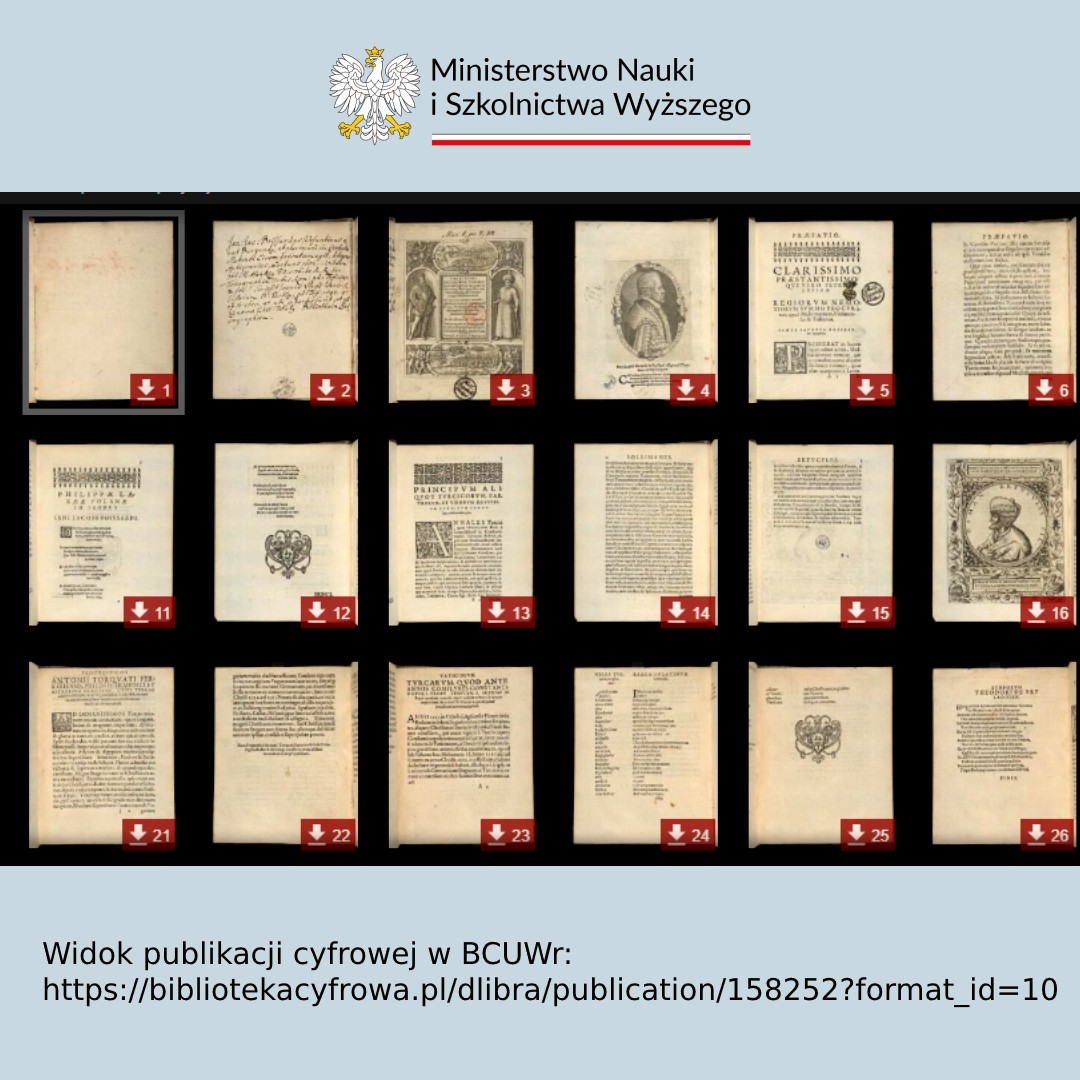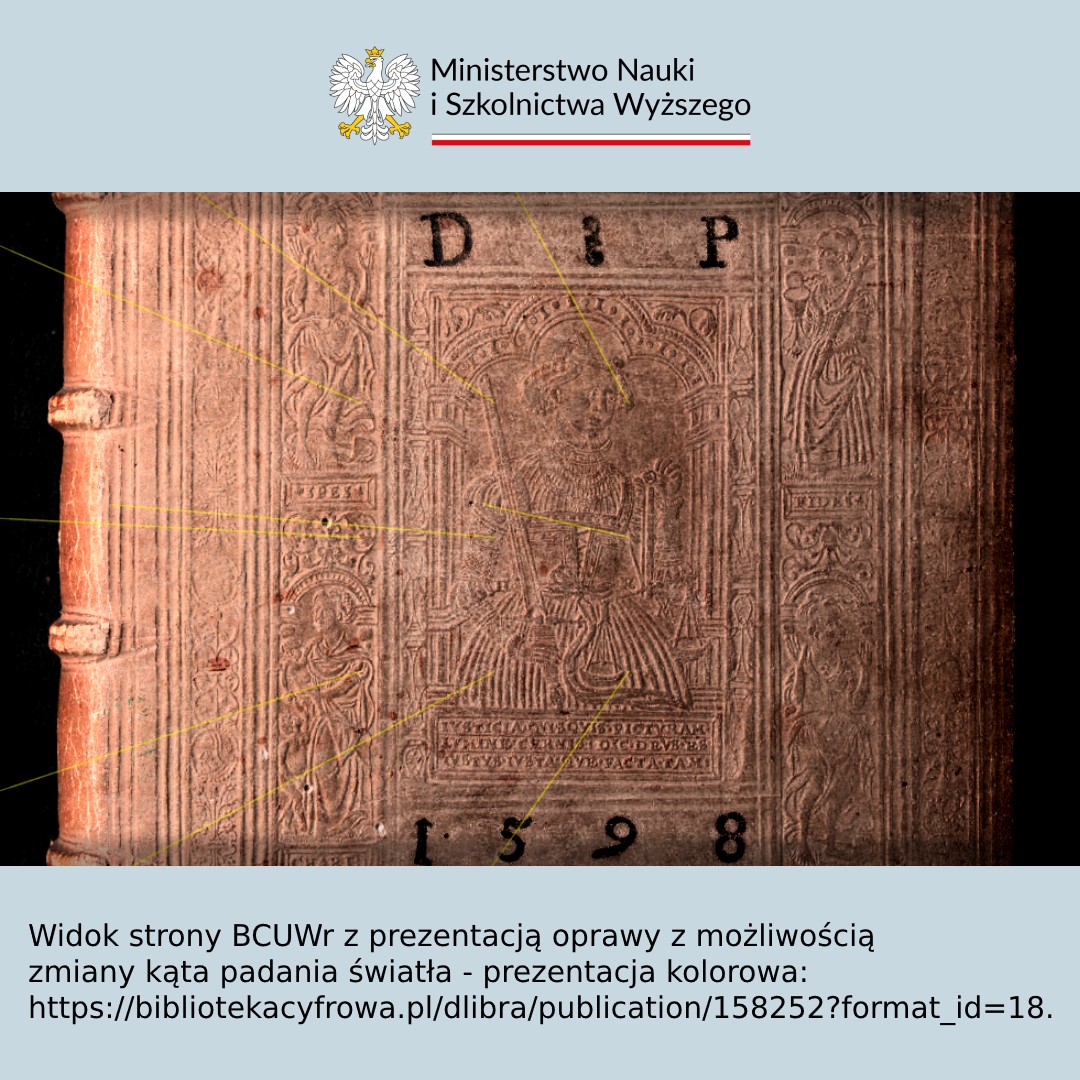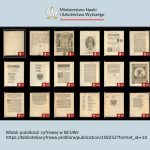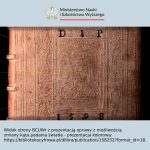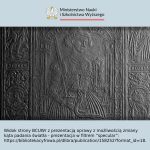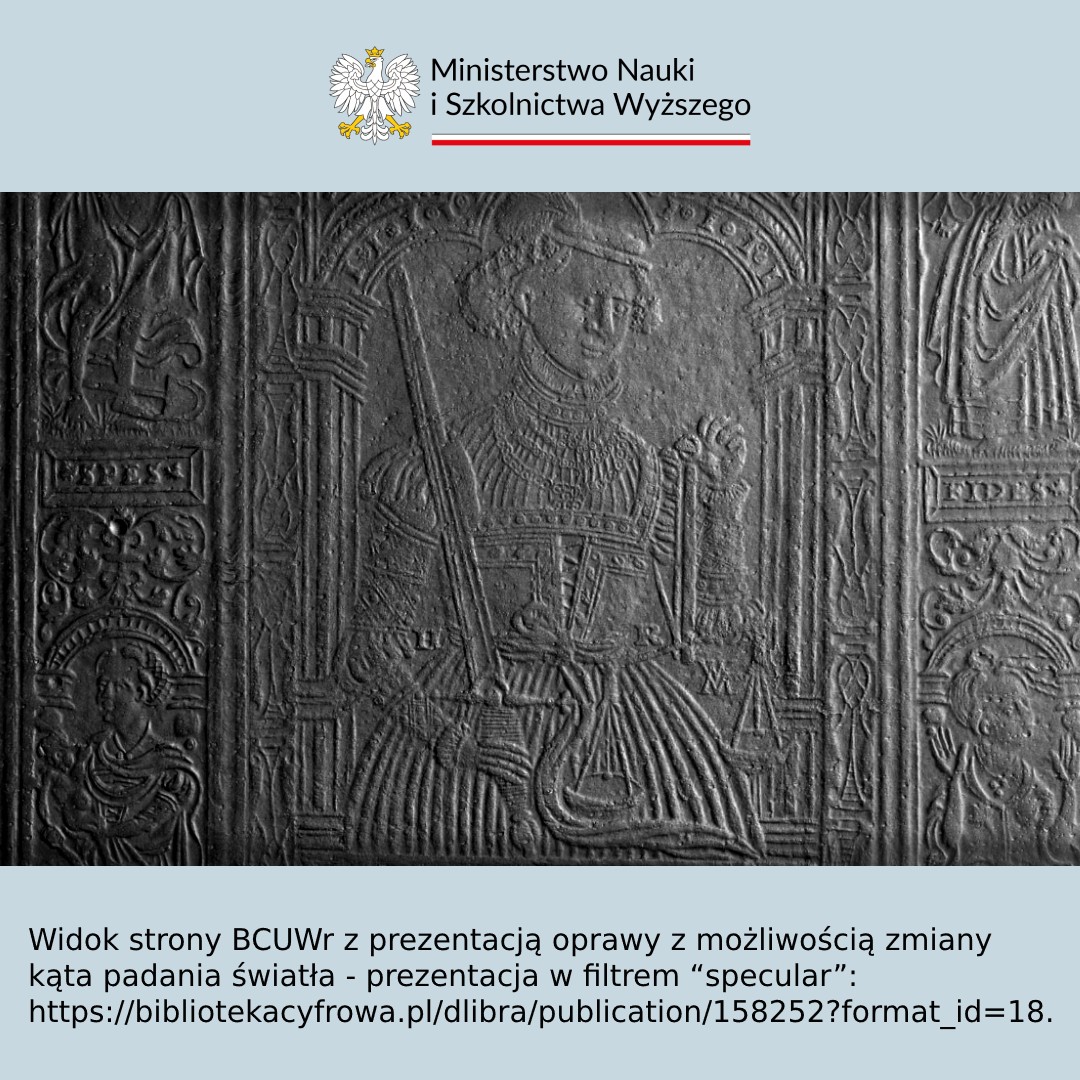
Polonika at the University Library
Polonika of the 16th-18th centuries from the collection of the University Library in Wrocław – processing, digitisation and making it public on the web – Ministerial project implemented under the program Social Responsibility of Science – support for scientific libraries.
The University Library in Wrocław has one of the richest collections of old prints in all of Europe. The collection contains about 10,000 polonikas – works in Polish and related to Poland. Among them are many prints not yet included in Karol Estreicher’s Old Polish Bibliography and its supplements, as well as in publicly available databases, especially in the central catalog of the collections of Polish scientific libraries (NUKAT). Conducted on 02.11.2023–01.11.2024 the project “Polonika XVI-XVIII-wieczne ze zbiorów Biblioteki Uniwersyteckiej we Wrocławiu – opracowanie, digitalizacja i upublicznienie w sieci”, funded by the then Ministry of Education and Science, was aimed at the comprehensive development, digitisation and publicisation in the UWr Digital Library of selected 500 rare prints from the mentioned resource.
As part of the project, all prints were processed in the NUKAT Central Catalog and in the local database of the oPAC catalog of the University Library (along with information on bindings and provenance), digitised in full or to the extent of key pages allowing identification of editions, and compiled and published in the UWr Digital Library (https://www.bibliotekacyfrowa.pl). During the digitisation process, special emphasis was placed on the documentation of bindings and provenance marks.
Polonikas were taken into account in a broad sense, i.e. meeting the territorial, linguistic, ethnic and content criteria (books printed on Polish soil, in Polish, by Polish authors or related in content to Poland). The selection of objects was guided by such criteria as the rarity of a given work, its significance for the history of Polish and more broadly European writing, and the important historical provenance of the copies.
In the collection under discussion are larger provenance and material assemblages. Examples include dissenter prints from Leszno, which became an asylum for the Bohemian Brethren in the 17th century. From the Jednota Printing House there comes, among other things, the first edition of Jan Amos Comenius’ Latin textbook, which was extremely widespread later, Janua Linguarum (Leszno 1631) – a copy as yet editorially undeveloped, on poor paper, with numerous errors corrected by hand. Also of interest are the Polish-language ordinances of the Prussian kings, especially Frederick II, created immediately after the takeover of Silesia in 1742. Patent and prohibition for on weddings and feasts … dangerous shooting near straw roofs or Royal-Prussian mandate to hang those white-headed women who would deceive a soldier into running away […] on the gallows (both printed in Breslau in 1742 and 1743, respectively) are invaluable research sources for the history of law and customs.
International cooperation of imprints
The prints come from both Polish, Silesian and European outlets – a significant number were published in distinguished Dutch, English or French centers. This indicates the network of interconnectedness of the Polish and European cultural and political elite. Erasmus of Rotterdam in his work on the multidimensionality of language Lingua, published in Basel in 1526, included a dedication to Krzysztof Szydłowiecki, Voivode of Kraków and Chancellor of the Kingdom of Poland. Consultationum medicinalium published in Lyon in 1558 (1560) contains the lectures of the esteemed Italian physician, Johannes Baptista Montanus (1489-1551), written down by his pupil, the Lublin-born Valentin Sierpinski, and published in 1702 in London De structura orationis liber Dionysius of Halicarnassus was translated by the rector of the Zamojska Academy, Szymon Birkowski.
Provenance notes and other ownership marks also attest to the existence of trans-local networks of scholarly and private contacts, which included Poles. For the book history researcher, traces left by readers – underlining, notes, comments or marginalia – are also valuable.
Three areas of digitisation
An important aspect of the project’s effects was the digitisation of objects, which from a technical perspective was carried out in three areas. The first involved scanning in its entirety the contents of 80 objects, among which were unique objects due to their importance to and about Polish writing and their historical significance. 420 objects were scanned in part, in terms of the so-called key pages, the scope of which includes the title page, pages with the names of dedication addressees, the beginning of the main part, colophon and printer’s signets. Scanning was done with art scanners resulting in 2D digital copies in TIFF format at 600 ppi resolution.
The second area focused on photographic documentation of all objects. The book bindings were photographed in the standard eight shots, six of which present the object from the perspective of the front and back cover projections, the spine and the block edges. The next two shots show the object in perspective setting. In addition, for folio and quarto formats, transparency shots were taken of cards containing watermarks. This is also the standard form of object documentation adopted at the University Library in Wrocław. This kind of documentation is done on dedicated photo stations.
The digital copies resulting from scanning and additional documentary photography without loss of resolution are presented together in a presentation system through the UWr Digital Library.
The third form of documentation implemented in the project is Reflectance Transformation Imaging (RTI). The technique involves taking a series of shots of the subject with varying angles of light for each shot. Based on the acquired images, a presentation form is produced using dedicated software, which allows the user to view and analyse the object using tools to manipulate the angle of incidence of light and apply available filters to better expose the object’s texture. Documentation of the beautifully embossed bindings of 50 objects was made using this technique. This form of presentation in the UWr Digital Library is available as an additional format for a given object, which can be displayed by selecting Display RTI format. This is a new form of presentation introduced in Digital Library thanks to the implementation of this project. The number of objects mapped using this technique will gradually increase.
Thanks to the implemented project “Polonika XVI–XVIII-wieczne ze zbiorów Biblioteki Uniwersyteckiej we Wrocławiu – opracowanie, digitalizacja i upublicznienie w sieci”, several hundred unique cymels have become widely available to students, researchers and lovers of history and old books. We encourage you to explore the collection on BUWr’s website.
Text: Weronika Karlak, Department of Old Prints, University Library
Marcin Szala, Reprography and Digitization Laboratory, University Library
